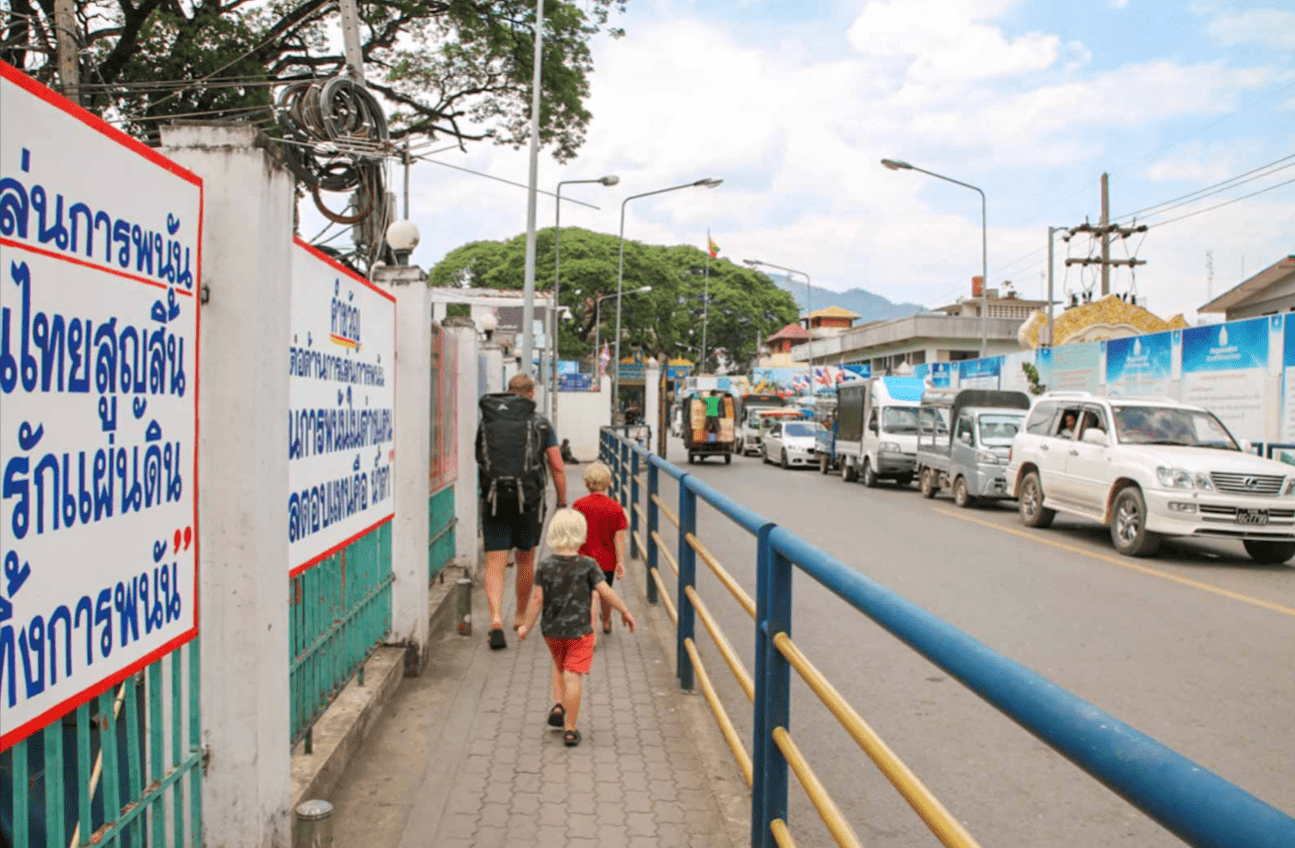How to Handle Border Crossings and Visa Runs

Travel has become more and more accessible nowadays with many people going on extended work holidays overseas in this globalised world. Business, holidays or extended travels – visa rules and border conditions are a common headache for many travellers. You'll often come across the words border crossings (or border runs) and visa runs. Knowing how to work with and manage these is very important if you are planning to be abroad for a long time.
Border Crossings: What Is It All About
A border crossing is to move from one country to another via controlled ports of entry and exit. It is a process where travelers encounter immigration officials that authenticate their identities, determine if they qualify for admission, and guarantee that they meet the rules and regulations set forth by the country of destination.
Important Points to Remember When Crossing a Border
- Passport: Have a valid passport with some validity beyond your stay Passport validity — some countries require your passport to be valid for a minimum of (usually) six months from the time you enter.
- Visas: You may need a visa before arrival, per your nationality and destination. Your travel date can not be more than 90 days ahead when you want to apply for your visa.
- Entry/Exit Policies: Be aware of home and destination country entry and exit policies. Others have rules about how long you can stay, and some will even ask you to show onward tickets or evidence that you have enough cash.
- Customs rules: Know what is banned or limited in your destination country. Check in goods as necessary to avoid the risk of fines or confiscation.
What is a Visa Run?
A visa run is an approach to travelling used by travelers who wish to stay longer than permitted in their country of residence (passport nations) be it via a legitimate visa or visa exempt means. This entails exiting the country for a short period of time, usually to a nearby country, and then entering again in order to obtain a new visa or an extension on their visa-free stay.
Purpose of Visa Runs
They are typically used by the following types of people:
- Long-Term Travelers → Those who want to stay in a country longer than their visa allows but do not want to apply for a long-term visa.
- Digital Nomads – Remote workers who want to avoid long-term visas but desire to stay in a country for more extended periods.
- Expats: Those who are pending longer-term residency or employment visas
How to Plan and do a Visa Run
Research destination countries:Find nearby countries that allow for smooth entry and exit. Things like visa requirements, how easy it is to travel to and from, and whether there are any waiting periods before you could return to your primary location.
Examine Re-Entry Regulations: Certain nations impose limitations on re-entering following a visa run. For instance, Thailand limits number of visa-exempt entries through land borders to two per calendar year. Going over this may lead to you being denied entry.
Timing Your Enter and Exit: Use border points which are associated for their efficient process and tourist friendly functions. Certain border points observe stricter implementation of visa rules.
Organize Required Documentation: Check if travel documents are clinical, including passports, visas for the neighbor-hood nation if vital, and some other documentation.
Border procedures: Be prepared for questions from immigration officers about what you intend to do during your travel. To prevent them from raising any suspicion provide clear and honest answers.
Time Factors: Travel in Off-Peak Schedule to Minimize Wait Times at Land Border Crossings. Also, keep an eye on any changes in visa policy that could have an impact access.
Potential Risks and Challenges
Re-entry may be denied: The immigration neutrals may suspect misuse of the visa regulations and deny re-entry.
- Change of Policies: Countries can change their visa policies overnight requiring travelers to do something entirely different than their former visa run.
- Financial: Cost can be high, transport, lodgment and visa will add on to the expenses.
- One is health amongst others: Travelling often through borders may be dangerous to your health, as in areas where health alert is in effect.
Alternatives to Visa Runs
One way to continue belonging in Thailand is by going on a visa run, though this is not necessarily a very legal way either, or even a suitable method to get an extension – they have been known to make pseudolegal loopholes. Here are some alternatives to think about:
Get a Long-Term Visa: Research long-term visas or residency permits that correspond with your reason for being there, including work, study, or retirement visas.
Visa Extension: This option is available in some countries that allow to extend their visa on in-country basis. To give you an example, in Thailand it is possible to extend your stay with a tourist visa for 30 days and this can be done at any of the local immigration offices.
Permanent Residency: Applying to live in a country permanently or for as long you want to require a degree of application specific to the country.
Digital Nomad Visas — A number of countries have now launched digital nomad visas specifically for remote workers, making long-term stays easier without reliance on visa runs.
Considerations Based on Country
Coming Across even as it relates to a few service or one or maybe the different it all comes close the top. Here, in the PRI example, are specific considerations for some regions;
1. Thailand
Visa Waiver: nationals of some countries will receive a 30-day visa waiver on arrival by air (2 entries per calendar year via land borders)
Visa Extentions: 30-day extension possible at immigration office, for a fee.
Border Runs: You need to refrain from border runs as repeat border runs are not encouraged and the authorities may deny re-entry on suspicion of abuse.
2. Countries Of The European Union (Schengen Zone)
90/180 Days Rule: This applies to non-EU citizens, who are allowed to spend 90 days without a visa in any 180-day period. If you overstay then you risk incurring fines or being banned.
Entry/Exit System (EES): Planned for roll-out in October 2025, the EES will automatically record entry and exit of non-EU visitors to strengthen security and integrity.
3. United States
Visa Waiver Program: This permits nationals of certain countries to travel to the United States for tourism or business for stays of up to 90 days.
Short Trips Outside US: Departures to Canada or Mexico do not interrupt the 90 day count — admission period resumes at re-entry.
How to Cross the Border (and Run the Visa) Smoothly
Here are few tips that you need to follow in order to remain stress-free.
- Stay updated: Check travel destination for the latest updates regarding visa policy and Entry to border.
- Retain Documentation: That is site visitors, entry and exit stamps, visas or any discussions with immigration authorities.
- Proof of Sufficient Funds: You may have to show that you have sufficient funds to cover your stay in the country you are visiting.
- Obey The Local Laws: Be sure that you abide by all of the rules of the hosting country so that you do not get any legal trouble (sometimes even trifling incitements to the law can induce the cancellation of your visa).
- Ask Immigration Specialists: If there is any confusion regarding visa laws or border crossing rules, consult immigration specialists or legal professionals.
